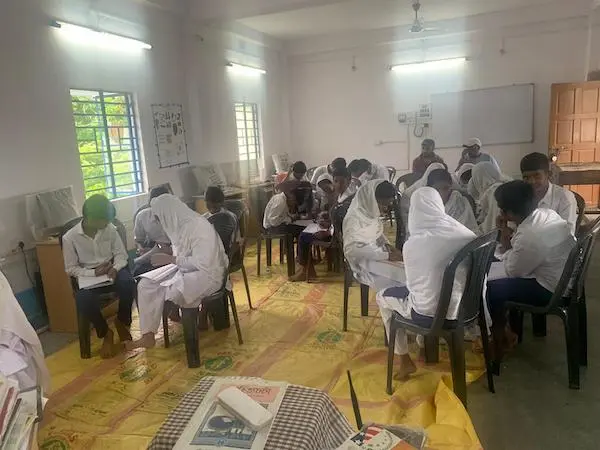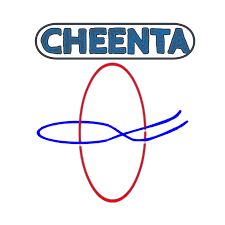We are conducting some Math Circle workshops in rural parts of Bengal since 2016. Here are some photos and videos from the one that we conducted on 25th July, 2023. This post also contains a diary of that workshop.
Diary
About 30 students participated (from classes 6 to 10). They were split in groups of 4.

Initially each team wrote the names of team members in a piece of paper. Most of them wrote in English. Some wrote in Bangla.
In the introductory remark, I explained the idea of Math Olympiad. Then quickly proceeded to problems.
Problem 1
How may primes are there from 1 to 50?
Can you identify twin primes?
Homework: Use your parents’ smart phone to find more about the twin prime conjecture.
Do you know what is a ‘conjecture’?
How many twin primes are there from 1 to 50? How about from 50 to 100? Will they continue to get rarer?
Remark for Problem 1
Students were able to identify twin primes, discuss amongst group members and present it on the board.
As this is an ‘experimental problem’, they were immediately ‘put to work’. It clinched the attention of the students and helped them to get excited about the process.
Problem 2
Draw a circle and four chords such that every pair of chords intersects each other and no three pass through same point.
Put four dots inside the circle such that each chord splits them in groups of two dots.
Remark for Problem 2
Most groups could successfully do this using multiple methods. The class 8 group presented the solution on board.
Problem 3 (Hard)
ABC be a triangle. Draw two cevians from A to BC, two cevians from B to CA and two cevians from C to AB such that no three cevians pass through the same point.
In how many regions is the interior of the triangle split into?
What if there are 3 cevians instead from 2? What if there are 4?
Can you find an algorithm to solve it without drawing the picture and manually counting the regions?
Remark for Problem 3
Most students were deeply engaged in drawing pictures and manually counting the regions. Some could detect an initial pattern. One group from class 9 could detect the entire pattern! Afrina, a student from that group, presented it on the board


Leave a Reply